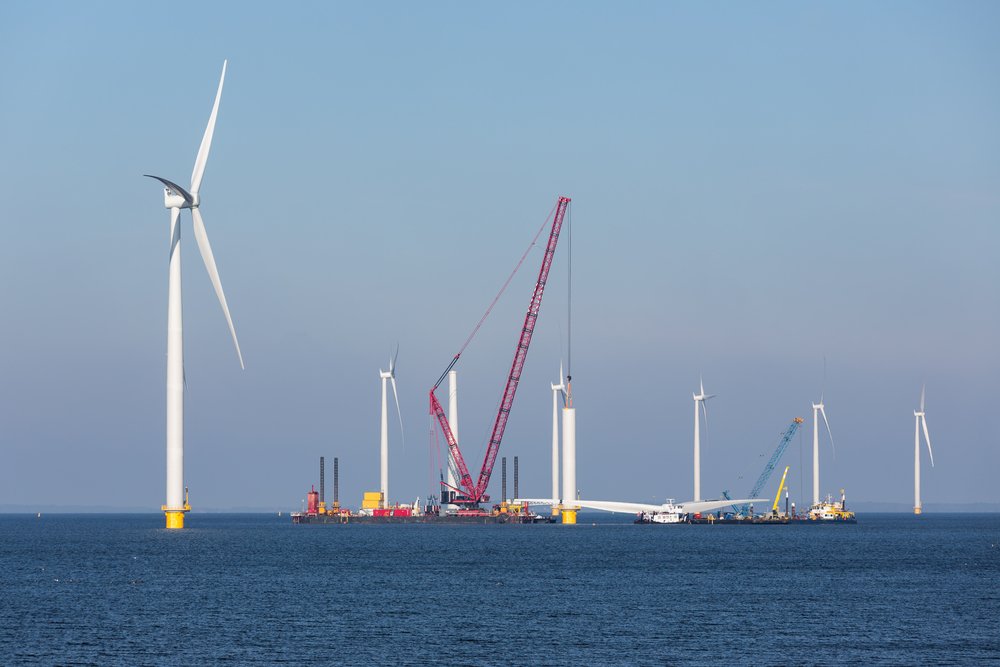Germany’s energy transition is in the midst of a battle for scarce resources. More and more wind farms are being built in the North Sea, blocking each other. The proximity of the turbines leads to power losses, disputes, and uncertainty for billions of dollars in investments. Lukas Vollmer of the Fraunhofer Institute in Bremen describes the situation soberly: “There will be many wind turbines in the German North Sea that will steal each other’s energy.”
Battle for wind farms in the North Sea
The seriousness of this development became apparent on August 1st. On that day, the Federal Network Agency planned an auction for two sites in the German Bight. Despite the planned 2.5 gigawatt capacity, interest was lacking. No investor submitted a bid. In June, only two bidders had already appeared. TotalEnergies received a site for 180 million euros—a bargain, but one that meant massive losses for the federal budget. Vollmer attributes the reason to the proximity of existing wind farms.

The expansion targets of the energy transition are considered ambitious. 30 gigawatts of offshore capacity are to be generated by 2030, and even 70 gigawatts by 2045. However, the North Sea is already densely occupied: 24 wind farms are generating electricity, and 26 more are planned or under construction. Some are located less than a kilometer apart, which increases power losses and fuels the long-term battle for profitable land.
Power loss as an underestimated danger
The physical effects are clear. The denser wind farms are built, the greater the power loss. Vollmer warns: “The losses have long been underestimated.” In extreme cases, the yield drops by 20 percent. The situation resembles the shadow of a mountain: Behind a wind farm, the downstream rotors receive significantly less energy.
Shading has been known since the 1980s. Back then, the turbines were small; today they tower almost as tall as the Eiffel Tower. Hundreds of colossi per site are not uncommon. Jakob Eckardt of the German Association of the Energy and Water Industries (BWE) calls this a “real threat to the entire industry.” Billions are being poured into projects, but unattractive sites are weakening the momentum of the energy transition.
International conflicts over wind
Germany isn’t the only country in the battle for suitable sites. In the UK, plans by BP, EnBW, and Ørsted are clashing. The Danish company felt its existence was threatened by new projects. Only after negotiations did it withdraw its accusations. Joachim Reuder of the University of Bergen warns: “There will be more and more conflicts over wind.”
Even countries themselves are at odds. The Netherlands and Belgium are arguing over losses of up to three percent. Germany is experiencing similar problems with Dutch wind farms off its coast. Reuder is therefore calling for international agreements to fairly distribute power losses – similar to water rights for rivers.
Models and solutions
Researchers are now providing more precise models. Vollmer works with weather data from typical wind years. This shows how strongly wind farms influence each other. While freestanding turbines can generate over 4,000 full-load hours, closely spaced sites often only achieve 3,000. The prospect of low yields deters investors.
As a solution, Vollmer proposes a broader distribution. Some areas could be made available for military or nature conservation. Cooperation with countries like Denmark offers opportunities, as they have plenty of space and lower electricity demand. The German Federal Ministry for Economic Affairs and Energy is also examining ways to reduce shadowing effects and stabilize the energy transition.
Despite all the problems, Vollmer’s conclusion remains positive: Offshore rotors in the North Sea continue to provide the most productive form of renewable energy. Even in the battle for wind, their potential remains crucial for the future.
